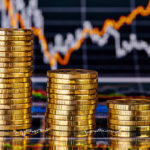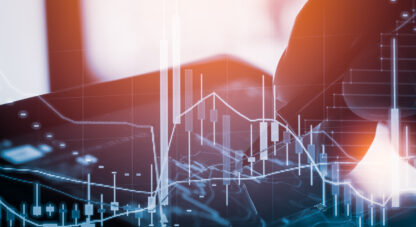Podcast: Play in new window
About this week’s show:
- As money flees paper assets looking for a home, there will not be enough gold to go around
- The West still likes “paper gold”, The Asians prefer the real stuff
- The majority of U.S investors still ignore gold—this is a gift to the intelligent minority!
The McAlvany Weekly Commentary
with David McAlvany and Kevin Orrick
“I’ve seen gold at very low levels, and I’ve seen it at very high levels. And the great likelihood is that hyper volatility will continue for years to come, and it presents investing opportunities to buy, and it presents an opportunity to sell and take a profit. The great thing about taking a profit is you can come back and do it all over again, and this time you have a little bit more money to do it with the next time you engage in that investment.”
– Roy Friedman
Kevin: Our guest today, as promised, we’re going to be talking about precious metals, and it will be with a professional trader, Roy Friedman. We’ve called him Trader Roy in the past, and that is how we will probably refer to him in the future. Roy has been in the business for three-and-a-half decades. He has worked with you, and of course, your father before that.
David: This is the enjoyable thing about being in the business for now 45 years – these long-term relationships, the camaraderie you feel going to different industry meetings and what not. Roy and I have met up virtually all over the world. We like the history. And certainly, my dad was doing business with him and trading with him back in the 1980s, and we have continued that for part of our business, even up through 2017.
Kevin: What I have loved about talking to Roy through the years – I’ve talked to him on the phone many times, too – he doesn’t mince words. You and I have talked about the difference between interviewing an academic, who has an academic theory, but really doesn’t have to test it on a daily basis to keep their job. Roy Friedman is a little bit different. He has to be right on his picks. He has to be careful the way he trades because he is working with people who not only work with hedging markets but he, himself, if also a professional hedger. He has to look at those charts and be right.
David: Yes. Buying product, maintaining an inventory, understanding the dynamics, the ebbs and flows, and as you say, hedging product along the way, being active in the futures market in order to gain that exposure that you need, long or short. It is an interesting world, and it is a world that very few people stick with very long. So again, we’re privileged as a family business to maintain some relationships with folks who have been in the game for a good bit of time.
Kevin: One of the things that also has struck me through the years with Roy, calling him when the market moves one direction or another, is his command of understatement. He never overstates, he never makes it sound like it’s the end of the world. He just says, “Well, maybe this happened, maybe that happened.” But he never gets too excited.
David: I remember one instance in which we were talking about the difference between palladium and platinum, and you almost had to say, “Now, wait a minute. Did he just say that we should be buying platinum with both fists?”
Kevin: That’s just not Roy.
David: Because in so many words, that’s exactly what he was saying. “Time to move from one to the other.” And again, to us – relationship, relationship, relationship. Today, we’re here to talk about a commodity. And that has nothing to do with relationship, and it happens to be the connecting point, the nexus of this long-term relationship, which we’re so grateful for.
* * *
David: Roy, we’ve known each other for several decades, and we’ve seen the ebbs and flows in the gold market, and of course, the other precious metals, as well. I would love to get your opinion on gold and silver right now. We’re talking about decades of experience on a daily basis, looking at the trends, and whether it is from a technical perspective or looking at the supply and demand fundamentals, you are a guy who is very well-rounded in understanding not only what is happening, but why. So maybe you can set the context for us. Where have we been – past tense – what was the significance of the 2011-2012 precious metals downturn or meltdown, and where are we now, and where are we going? Big question to start off.
Roy: Yes, well it’s a big question to start off with, and probably one that we could spend the balance of the day and longer just digging into that one. If I had to give you a reasonably short summary of the market, I would tell you that precious metals traders and investors, small and large alike, are all forward-looking. Decisions are made on a forward-looking basis. The reason I lead off with that comment is, the markets, of course, had their great bull run followed by the dramatic sell-off. But all of those events were actually precursors to the actual policy changes imposed by our Federal Open Market Committee. The markets rallied even before the onset of a stimulus and the markets already began selling off while stimulus was still being employed by our policymakers.
So it is important to look at the market from the perspective of my vantage point. Gold is a leading economic indicator, meaning it is a forward-looking barometer of economic policy, monetary policy, geopolitical possibilities. And this why we often see gold move before the fact, and often see gold move rather dramatically after a policy is actually implemented because the market moved in anticipation of that event actually taking place.
David: So, what would the market be anticipating today? We put in lows in December 2015 at $1050, and we’re close to $300 higher now. Plenty of people have still said, “Look, it’s going to $500, $300, $700,” what have you. And plenty of people would say, “No, there is nothing here but a dead cat bounce. And yet, $300 higher – what is the market anticipating? Is there room to move higher, and what would the primary motivators be of those who are buying?
Roy: I think no one is going to continuously pick the lows, and for that matter, pick the highs. I continue to think, even with the recent rally based on the events in the Korean Peninsula, the market, from my perspective, still has much more upside potential than it has downside risk. That doesn’t mean that gold may not revisit $1000, or at some point break $1000. But if you’re talking about a long-term strategic investment that is part of a well-balanced investment portfolio, I believe there is greater upside risk than there is downside risk. I would be surprised if we didn’t see gold revisit $1800 and north before it would break $1000 on the downside.
So if you look at it from my perspective as a trader, I think there is a greater likelihood that gold would rally $500 from current levels, than drop $300 from current levels. To me, that’s an acceptable risk/reward barometer for making an investment decision. And I base that on a number of factors, most of which I just touched on in my opening comment. I believe monetary policy is favorable for precious metals, and certainly, we live in a world where geopolitical events, more often than not, bring upon an upward movement in the world of gold and silver.
Lastly, there was another development in China. It didn’t get as much press as I would have thought it was going to get. This was a decision by the Chinese central bank that they were going to dramatically change the rules and the way that the Chinese public was investing and trading in crypto-currencies, for lack of a better term, the bitgolds of the world. And this is perhaps evidence that maybe the world has seen as much of the crypto-currencies as becoming palatable not only to central banks, but to investors alike. Going back to a traditional hard asset like gold is, perhaps, better suited for the average investor.
David: Let’s talk about the consumer because it is obvious here in the U.S. that over the last several years Americans have had little to no interest in physical, tangible assets like gold and silver. The demand profile in Asia has remained pretty strong, continues to be. Is Asian demand still the driver? At what point do you think U.S. demand comes in and sort of drafts behind Asian demand and gets on board?
Roy: I wouldn’t completely agree with the comment inside of the question. Physical demand for precious metals is down globally. Now, while I would agree that demand is down, probably, by its largest percentage in the United States, and perhaps it has seen its lowest drop in Asia, overall demand is not great at the moment, and has been suffering for much of the last six to 12 months. We all come from different mindsets, different backgrounds, and much of our Asian trading partners have a greater connection, and put a greater value on holding physical precious metals. It is part of their culture. So yes, I would say that demand continues to be better in the Asian communities, but overall, like the United States, like much of Western Europe, demand is certainly well off of its peak levels.
David: Advising an investor today, you gave us a risk and reward profile earlier, probably better upside gain potential than downside risk. Does that make this a reasonable time to buy? Is there someone with a brilliant rationale on the other side of that trade, and this is actually the most reasonable time to sell? What are the actions you would advise?
Roy: Let me just add that as a trader in the wholesale end of the business, I don’t speak with, nor do I trade directly with, the investing public, which is the Javas, the ICA, and your colleagues. So I’m not in the business of giving investment advice. I’m always happy to talk from my personal perspective, and I don’t mind sharing with anyone that I’m an advocate, and I continuously invest in gold, and believe gold is, and has always been, an important part of my personal portfolio. So with that being said, I’m not a trader, per se, for my personal portfolio. And my company, MTV, is not a speculator in the market. We are professional hedgers. We buy and hedge, and we sell and hedge. And that’s the nature of our business.
So with regard to my personal feeling, I’m not looking to capture the short-term ebbs and flows of the market like so many market participants do. I’m looking at the market as growth opportunities for my personal well-being and my family’s personal well-being. And as such, I’m constantly in the market, I’m always buying. For lack of a better term, most people would recognize that as dollar cost averaging.
Now, I will tweak that from time to time, and I may not be as heavily involved in buying when the market is rallying as I am when the market is falling, because of course, I’m in the market and I do have a personal opinion on what the market is going to do and where the best opportunities lie. But with that being said, gold and silver, platinum and palladium inclusive, have never been more accepted by market participants, small and large alike, as an integral investment component in a well-balanced portfolio.
And I continue to be an advocate of telling people, everybody makes individual investment decisions. Some make them alone and some make them with the advice of other professionals who they employ. But I believe that gold needs to be in every investor’s portfolio. What percentage that is, is a personal choice. And how one goes about accumulating that position, again, is a personal choice. But I think history will prove that there has not been a point in time when looking at the market over the course of six plus months, where dollar cost averaging in gold has not proven to be a beneficial strategy.
David: I think of contrary indicators, things that stand out. And I don’t know if this is one or not, but a number of months ago you and I sat at a dinner and you explained that you hadn’t seen such a low level of investor interest in gold on the market in your four decades of experience. What does that mean to you? Is that a time to buy when no one is really paying attention, prices have suffered? Does it represent a contrary indicator? What does that mean to you?
Roy: Again, from a personal perspective, I always prefer to be in the minority. If the whole world thinks the market is going up, to me, that likely signals a top is getting close. I think the best analogy, again, from my personal opinion right now would be the stock market, and much of the components and indices within the bigger stock market here in the United States, and for that matter, abroad, as well. If you look at much of what is being written about the stock market right now, you will see that the rally is being fueled by small investors getting in, which tells me that the larger professionals are cashing out while the smaller guys are getting in.
I like to be the contrarian. If your readers and listeners and clients tend to agree, while gold is well off the lows that you cited earlier in our chat, this would certainly be a period where precious metals are not in great demand. Many investors have chosen, whatever their reason may be, to liquidate their precious metals holdings. From my perspective, that is a buying opportunity. But that, again, is speaking from my personal perspective, not speaking on behalf of my employer.
David: The financial markets are full of writers who have different ideas about where prices will go. Just a few years ago the Dow was heading to 40,000 – 40,000. So we’re at 22,000 and a good way there. Jim Rickards says, “Look, you price gold for the liabilities that the U.S. has to cover and you have gold priced at around $12,000 an ounce.” So we speculate about the price the metals can reach and if we assume that this is a bull market, where might figures go? What is a conservative estimate? And what would be an outside figure that you think is actually reasonable? We have the trading trends, but we’ve also got the supply and demand dynamics.
As I’m sure you know, the World Gold Council came out with a piece not long ago saying, “Look, we’ve plateaued in terms of supply with a lack of capital investment in the mining pipeline.” We’re actually going to now see a decline in supplies from the mining sector, so we have some pressure coming over the next few years, a drop in supply to the market. How do you put all that into a blender and come up with a number that, yes, conservatively we could go here, and if you were really aggressive and you saw some sort of a mania in the gold market, maybe we could even go here – X, Y, Z?
Roy: Well, I won’t speculate on the scenario where gold just goes to the moon, for lack of a better term. But I will speculate on where I think gold can get to given some of the factors that you just mentioned, much of which is based on my belief that we are sitting on what history will write in retrospect as one of the great asset reallocations in history when it actually begins. And that would be the stock market correcting from its current world record prices, and much of that money finding a new home in other investments.
So if you take into consideration what you just mentioned, my belief that a major portfolio adjustment is probably much closer to happening than further down the road, adding on some of the geopolitical events that affect global markets, monetary policy, subjects we have lightly touched on already, it would not surprise me to see gold at $2200-2400, or potentially double the price of where it is inside of 24 months. I would be very, very surprised, on a personal level, if we could not see gold back into the 1600s in the next four to six months, given everything that we are currently seeing in the marketplace that has a direct impact on all of our investments – stocks, bonds, etc.
David: Does that depend on investor sentiment changing, as you suggested, maybe a re-allocation out of stocks, suggesting lower prices in stocks, and greater safe haven demand?
Roy: Correct. Yes, it’s clearly a summation of the financial markets have never been bigger, there has never been more money in the market, and when this re-allocation begins to happen, I don’t see the money going into our savings and loan and money market accounts. I think this money that will come out of the stock market, and may eventually come out of the bond market, as well, much of it will find a home once again in the world of precious metals. And it will be the bottom line driver that brings us back into a bullish atmosphere.
One of the things that I’ve always been amazed about with all the years I’ve been trading, all the years we’ve known each other, and all the years I’ve known your dad, is how often investors come back to owning something again that they owned once in their life, whether it was their first favorite car, or whether it was a home in a certain neighborhood that they wanted to go back to. In our corner of the market, all of our clients and all of our trading partners begin by buying. They don’t enter the market by going short a physical gold product.
I’m in the business of selling you physical gold so that you, in turn, can supply it to your customer. All customers begin the process of getting involved with physical precious metals by buying. They may, at some point in time, choose to sell. Hopefully, they sell for a profit, but in some cases they may sell for a loss. But invariably, those investors, in my opinion, come back to buy again, and on top of everything that we have been discussing, I think we are going to see much of that happen yet again.
And it could start happening tomorrow. Many of the people who have opted for liquidating all or part of their precious metal holdings over the last six-plus months, I feel very strongly will come back into the market again. And this will further fuel the rally that I think is closer to happening than, perhaps, some of my peers believe.
David: It is interesting because we know what the footprint was prior to 2013 and 2014 as we began to see short-term investor liquidations through the exchange-traded products. And once you count up 1000-1200 tons of liquidated gold bars through GLD and your various other exchange-traded products, as far as I can tell, most of that metal disappeared, a lot of it to Asia. And I just wonder, there is a big question for me, if those investors come back and with a click of a mouse think that they can allocate their portfolio to the old 1200 tons of gold in those exchange-traded products, is there available supply to meet that demand?
Roy: To the best of my knowledge, the answer is no. But most of the questions you’ve asked me, I would answer and tell you I am pretty much 100% guaranteed that I am giving you the correct answer. In this scenario, I am not working for, nor am I doing business directly with all of the mines that produce metal, and all of the bullion banks that often finance these types of operations. It is difficult to know how much of this gold has been sold forward, and what the contractual terms of those deals may be.
Based on the amount of production that I believe that the world can produce in a reasonably short period of time, I am confident in telling you that if the world started spinning very differently tomorrow it would take several months before supply could ramp up to come anywhere close to meeting demand. It’s an area of the market where I would not classify myself as an expert, shall we say.
David: The other area which is tough to wrap your arms around is how much gold can come to market in the form of scrap – jewelry being melted down and being made available to investors. We know that a lot did come to market up to 2011 and 2012 as the price got to $1900.
Roy: It was a historical event. If you think back just a short couple of years ago there were companies that were buying scrap gold that were doing so much business and making so much money that they were able to advertise during the Super Bowl, the most expensive advertising that one can employ. There was an ad in the Super Bowl a couple of years ago for a company that was buying scrap gold.
David: At least anecdotally, you think about the gold ring that was your great-grandmother’s that is out of fashion, and nobody is going to wear it, and now maybe you just decide to take it in. You don’t get to do that twice because there was only one of those rings, so there is really not a replay.
Roy: Correct. My hunch is that most of that gold that was sold north of $1600, shall we say, we wouldn’t see anything like that again until gold went dramatically higher. And there is a real possibility we may never see that again, at least in my lifetime. Again, I find it hard to believe that there are so many people sitting on all of the necklaces and earrings and other bits of jewelry that another generation would be able to sell it again. I think you would have to go 10-20 years and literally jump to a new generation of 40-somethings to 60-somethings before we saw another wave of scrap gold selling like we saw just a short couple of years ago.
David: Let’s contrast the gold market from the silver market. They’re different in size. Maybe you can give us some insight on that. And it also, because of that, takes a different number of dollars to move each market. Tell us a little bit about where you see those markets, and are there really different buyers coming into the silver market than you would classically see in the gold market?
Roy: I think the answer to that is yes, and I will address that as a second point. You can look at the value of gold or silver in the historical ratio that gold trades, silver, commonly referred to as the gold-silver ratio, which most people talk about and most professionals follow, like I know you do, and like I do. I think it is pretty much a consensus view that in terms of dollar volume, the gold market is probably five to six times greater than the silver market. And that is an extraordinary amount of dollars that trade every single day.
Right now the gold-silver ratio is hovering either side of 75-to-1, which is at a historically high level. And much of what we are seeing is a lot of first time investors who are looking to get into the marketplace, who tend to be a little bit younger, tend to be very well educated, and I’m not necessarily talking about scholastic education, but just have a real understanding of the precious metals industry by virtue of what they can read and have access to on the Internet, and dealing with professionals like the brokers that work for ICA. And I think they look at the gold/silver market right now and they say to themselves, silver seems cheap.
And first-time buyers, and while I’m not dealing directly with the public, I certainly speak to lots of people who are dealing with the public, and from what I understand and from what I believe to be the case, younger investors who are getting into the market for the first time are buying silver. People who have already been in the market and are looking to increase their holdings probably are a little bit older and probably have a little bit more disposable investment income that they can throw at an investment, tend to purchase gold.
So I think we have the luxury in our business of having sister investments to suit the needs of different investor profiles, and that’s a good thing. We’re not limited to selling gold at $1300 an ounce to a first-time investor. We can sell them silver, and we get them familiar and they gain an understanding of our market. So I think it works to all of our advantage.
David: That has certainly been what I’ve done in our family. As my boys look at their cigar boxes and count the ounces that they have, they love stacking up silver ounces, and only one of them has ventured into gold so far. Of course, that’s mainly because 11, 8, 6, and 3, they’re working on a fairly limited budget. So one has ventured into the gold market, but it’s a lot easier to start there.
Well, can we assume – this is on my mind quite a bit and I think on the minds of our listeners, too – that the futures market, where purely paper is traded that utilizes tons of leverage – can we assume that that will continue to dominate the pricing of the precious metals? Why? And what would change that?
Roy: I think the futures market will continue to be the largest. And for that matter, if you assume the futures and the ETF, while they are like products, they are not exactly the same products. But if you separate the ETF and group it with the futures market, as opposed to what you and I do for a living, which is facilitate the physical transfer of physical precious metals, in the other two cases, despite the ETFs being backed up by the 400-ounce gold bars, or 1000-ounce silver bars, most of those investors are going to liquidate that investment before they ever call for some type of delivery.
And what you and I do for a living is, we trade full market value for the gold and silver that we buy and sell, meaning your client, when he or she buys a box of Silver Eagles from you, or 20 Gold Eagles from you, they are paying for it in full, just like ICA is paying my company in full to help facilitate that transaction. When somebody is buying something and they have to write a check or send a bank wire for the full value, they are likely to own and spend less than they would if they were trading in a brokerage account on margin where they may be trading with 10% down.
So the largest player in the market – it doesn’t make a difference whether it is stocks or bonds or gold or silver – the largest players in the market are not individuals, despite how wealthy some individuals in this world are. The largest consistent players in the market are the very large hedge funds and mutual funds, and they control, in some cases, they have billions of dollars of disposable money that is looking for an investment home. And they’re buying on margin. So they control a tremendous amount of ounces. And as such, because they’re trading on margin and they’re not taking physical delivery or making physical delivery, those largest trades typically get done on the futures exchange or the ETF.
So, to answer your question, and I hope I’m hitting the nail on the head here, if you assume the largest transactions are the ones that have the greatest influence on the outright price of gold or silver, then those transactions generally begin with a futures exchange transaction or an ETF transaction. Not that the end of the business that you and I are in is not an integral part of the price discovery and the ebbs and flows of the market, but what you and I do for a living is simply not the largest component of the industry. Paper trading is bigger than physical trading.
David: At the same time, we’ve seen a shift in direction within the Chinese market. You and I were both in Shanghai within a very short period of time of them launching the original contract, the equivalent of a futures contract, but where there is physical delivery of the metal involved. And we know the kilo bars that are tied to it. And it seems that there is a direction, at least in Asia, to transition from futures and leveraged positions to the real metal. Perhaps that is an Asian prerogative. Perhaps that is more of a long-term global trend.
Roy: I agree 100%. And that was a wonderful time we all had in Shanghai just a short couple of years ago. But I think you’re correct. Not to speak badly about one investment choice over another, but the futures markets are often the subject of articles which question the integrity of the marketplace, and is this the best place for your investment dollars to be at work. I won’t comment on the integrity of the futures market, but I will say that despite the fact that many of our customers at the moment have chosen to sell back their physical holdings, the overall physical market is probably growing, both domestically and internationally, at a faster rate than the futures market or the paper market is growing.
With that being said, the paper market and the futures market is still greater in terms of ounces and dollars traded than the physical market is. But many investors are opting for the security of owning and having the physical metal on hand or in a secure location of their choice as opposed to owning a paper product.
David: Within the physical sphere, which is where you and I operate, there is a variety of things to look at, and from the most generic 400-ounce gold bar to the 1000-ounce silver bar, down to smaller items, even fractions of an ounce in coin size, or even small-gram bars, some products trade at premiums above gold. And if you’re looking at age and at scarcity and condition, there are times at which those premiums are very significant, and other times at which those premiums, because there is no demand in the market, all of a sudden dry up.
Maybe this doesn’t apply to you as a gold trader, but if you were looking, as an individual, at the bullion market and the generic options that you had versus the area of the market where those products with premiums have been beat down, are you motivated one direction or another at this point, when premiums are almost nonexistent?
Roy: Yes – whether I’m wearing my investment hat, or whether I’m wearing my consumer hat, I like to consider myself a good consumer and I like to consider myself an educated investor. And I’m always looking for a good opportunity and a good deal. So with that being said, an investor entering the precious metals market right now, whether he or she is making an investment decision on their own, or once again they are working in concert with one of your account executives, I think the best thing to do right now is to look for a product, look for an investment product, that offers very good liquidity, meaning the bid/ask spread is historically narrow, a product where the premium, historically, does not completely evaporate, meaning a seller would get less than spot, if and when they chose to sell it back.
And I think the one thing to always remember is that much of the coins that we trade, the sovereign mint coins every year change from 2016 to 2017, and soon they will change to 2018. But every year, those coins no longer are what we in the industry refer to as new coins. They become back-dated coins, and back-dated coins still contain the same one ounce of gold, or half-ounce of gold, or one ounce of silver, whatever the product is that the investor is purchasing.
So if you believe you are going to hold your investment for more than one year, and if you believe that the store of value in an ounce of gold is no different than it is between a 2016 and a 2015-dated coin, which it is not, then the best advice I would offer – I do it in my personal life and I’m not shy about telling you – I buy back-dated products, because I’m going to hold those coins and the physical metal for years to come. So by buying a cheaper back-dated coin at a lower premium, my investment dollars go further and I’m able to purchase more ounces. That would be the best advice that I could offer one of your listeners today when it comes time to make a decision on what to buy.
David: One of the things that has crossed our desk in the last couple of months, again tying to what you prioritized as liquidity and narrow bid/ask spread, never losing its premium completely, and in this case, actually, a sovereign mint coin as well, bags of dimes, quarters and 50-cent pieces. When you can buy those at or near the spot price, the premiums, given demand, can push them up 10%, 20%, even 30% above just their raw silver content. So being able to position well – it’s a generic product that is very inexpensive, but it gives you a double play between scarcity and growth in premium, alongside a growth in the actual ounce of silver that you have there, driven, of course, by the price of the commodity, itself.
Roy: That further highlights what I am hoping to relay to your listeners today, is that there is nothing wrong with looking for a bargain and taking advantage of a good deal. And as you point out, 90% silver bags, as they are commonly referred to, are part of my personal portfolio. I have bought them at strategic opportunities when I have laughed at the price of silver, and when those bags have been trading for little to no premium, or in some cases, I have been able to pick them up in my personal investment career, at a discount, as well. To me, that is an excellent investment. At the end of the day the price of silver still has to go up, but if you’re in it for the long haul, then buying a product like 90% silver bags when you can get hold of them at a discount, to me, is a sound investment decision.
David: Roy, we’re always looking for perspective, and with, again, near four decades of trading experience in the metals market…
Roy: I’m trying not to advertise that four decades too much, because you’re not making me sound like I’m in my 20s or 30s any longer. So I think it’s closer to three-and-a-half decades. Let’s refer to it as three-and-a-half decades, not four, at this point.
David: (laughs) We’ll forget it’s the fourth decade and say you have, solidly, three-and-a-half. What is the parting shot of wisdom if you’re just getting starting in the metals business, if you were to say, “You need to know this?” You keep on talking about metals in your own personal portfolio with a long-term perspective, as if it’s going to be there for a little while. Maybe you can say something about what patience has meant to you, and how patience has aided you in your financial success?
Roy: I’ve taken money off the table, and I’ve sold precious metals along the way, sometimes at higher prices, and sometimes at lower prices, as outside factors in my personal life have dictated I do so. There is nothing wrong with taking a profit. You can own the best stocks in the world, but if you don’t eventually sell them you haven’t taken a profit. And you may have those investments, whether it is stocks or gold or silver, because it’s just something that you intend to leave your heirs and your family members at some point in the future.
But I think the average investor who gets into the market has to have a couple of things reconciled before they make any investment. And that is, what is the goal and objective of the investment? You’re not married to these investments for 30 or 40 years in many cases. Circumstances change and times change. And with all investments I think you have to have a strategy laid out in advance. You have to buy something and you have to say to yourself, “If it reaches this point for good news, a profit, or bad news, a loss, I’m going to liquidate that investment.”
It doesn’t mean you don’t come back to that investment over and over and over again, but I think you have to have a plan laid out. You have to have a strategy and you have to implement that strategy. Your investment portfolio needs to be refined and needs to be tweaked periodically. I suggest, in these volatile markets, you need to do it quite frequently. But that’s just my personal opinion. Circumstances change and the world we live in seems to be getting a bit nuttier by the day and these things all have a profound impact on our assets, and they need to be managed. So you can’t buy something today and just put it away for a rainy day. You have to keep an eye on it, and you have to manage it.
The other thing I would say is, never try to out-trade the market. No one is better and smarter than the market. If you want to buy something today, buy it. Don’t talk yourself out of it because you look at the charts and you think it’s going to be lower next Tuesday or two weeks from next Thursday. If you think it’s a good investment, buy it today. Don’t wait. Because nobody will consistently buy the bottoms and sell the tops. It doesn’t happen. The best professionals have trouble doing it, so the average investor is even less likely to achieve that type of success rate.
So I think those are the two things that you have to employ when starting to invest, and as you build and manage your portfolio. You can’t be a market timer, and you have to manage your investment. Not every investment will work out and achieve the goals you are hoping for. It doesn’t mean you don’t continue to tweak your portfolio. I’ve been doing this since 1980, you know, for my three-and-a-half plus decades in the business. I’ve seen gold at very low levels, and I’ve seen it at very high levels.
And the great likelihood is that this type of volatility will continue for years to come and it presents investing opportunities. It presents an opportunity to buy and it presents an opportunity to sell and take a profit. The great thing about taking a profit is that you can come back and do it all over again. And this time you have a little bit more money to do it with the next time you engage in that investment. Don’t over trade, but don’t get married to any position.
David: Absolutely. And as I’m listening to you, I’m thinking about the successes and failures that I’ve had in that regard, things that I knew I should have bought, and it was obvious to me, and I got hung up over a dollar or two – palladium at $160-165 – I got hung up over a $5 bid/ask spread and I said, “Well, I just see what happens next week.” And it never happened next week, and it never happened. You live and you learn.
Roy: We all have stories like that, and I’m not embarrassed to tell you I have plenty of my own, and I do it for a living.
David: (laughs) It’s helpful to know that from some of the best gold traders in the world – have a strategy laid out, understand what your disciplines are. Those parameters represent risk guardrails for your portfolio management.
We thank you for joining us, Roy. I look forward to having you back. It’s been a couple of years since you’ve been on the program, but over the next few years we would love to have you back and comment again.
Roy: Let’s not make it another couple of years before you invite me back.
David: Excellent. We look forward to it.
Roy: All right, all the best. Thank you. Bye-bye now.
* * *
Kevin: Dave, after talking to Roy for the last 30 years, I can tell you that him coming out and saying that we could see gold in the $1600s in the next four to six months, and then ultimately, in the next 24 months, to see up to $2400 an ounce, that’s just not something that Roy normally says. He must really mean it.
David: And when investors flip the switch, and they ultimately are less interested in stocks, and more interested in gold, he’s right. There is a reason why in this go-round they don’t liquidate stocks and go directly into money market funds and cash and bank deposits, because there is nothing there for them. There is nothing there for them except risk exposure with Janet Yellen and her crew of money managers.
And so, there really is a different set-up in this go-round. When that switch gets flipped, the interest in gold – that dynamic will be interesting, of course. But the available gold to meet that demand, too, I think you are going to end up with a very different discovery. And of course, the price will tell all about it.
















